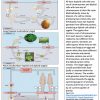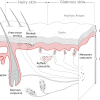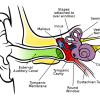Inner Nature: The science of reproduction

By Vidya Rajan, Columnist, The Times
Reproduction is the process by which cells make new cells and organisms make babies. No surprises there. But underlying the banality of that observation is a profound question that had thinkers from Aristotle to Darwin scratching their heads: How does reproduction work? How is it that cats have baby cats nearly, but not exactly, like themselves? And if cats make...
Inner Nature: Immunity — Autosurveillance

By Vidya Rajan, Columnist, The Times
The immune system is the mechanism that protects and defends the body. Although its main purpose is defense against attack, the immune system is also a barrier, border patrol, soldier, police, doctor, parent, and amazingly, a fortune-teller, all in one package. Not only that, it exists in every living organism from bacteria to plants to animals to protect against...
Inner Nature: Circulation — nutrients in, waste out

By Vidja Rajan, Columnist, The Times
The purpose of circulation is to bring nutrients to cells and remove wastes. Circulation is important for all organisms, including plants, fungi and bacteria; it’s no good to a cell if materials cannot get in and out efficiently. In single-celled organisms, which live suspended in an aqueous environment, the medium performs this function.
...
Sunday Punch: Shut down Mariner East II, for good

By Mike McGann, Editor, The Times
Would you allow a five-year-old to run amuck in your neighborhood with a grenade? I’d like to think not, as the odds of it ending well are pretty small.
So, allowing Sunoco/Energy Transfer Partners, a corporation who acts nearly as responsibly as a five-year-old, to continue building a pipeline across Chester County, near homes, schools and retirement communities...
Inner Nature: The Breath of Life

By Vidya Rajan, Columnist, The Times
Respiration is the technical term for the release of energy from food at the cellular level. On a colloquial level, it is used to describe the process of breathing. Here, I will discuss how the process of breathing using the respiratory system supports the intake of oxygen and removal of carbon dioxide, a waste product of respiration. I am going to focus narrowly...
Inner Nature: Digestion and food processing

By Vidja Rajan, Columnist, The Times
The previous group of Inner Nature articles were loosely organized around how organisms sense the external environment using vision, sound, touch, taste and smell. What is most remarkable about this cluster of what appears to be completely different mechanisms is the profound underlying similarity. This similarity is due to the outcome of notionally different sensory...
Inner Nature: That sense of smell

By Vidja Rajan, Columnist, The Times
When preparing a body for embalming, the Ancient Egyptians carefully entombed organs considered necessary for the afterlife with the body. The brain was considered dispensable and was pulled out of the skull with a hooked rod inserted through the nose (http://legacy.mos.org/quest/mummy.php). In this, the ancient Egyptians discovered something significant: it’s...
Inner Nature: Gustation, the sense of taste

By Vidya Rajan, Columnist, The Times
Lead in paint and gasoline was banned in the 1970s because it causes brain damage by downregulating the production of brain-derived neurotrophic factor (BDNF) [1]. BNDF is an important growth factor for brains to grow and develop properly. Therefore, banning lead from gasoline makes sense – after all chemicals in fumes get breathed in, enter the circulation, and...
Inner Nature: Getting touchy-feely with Somatosensation

By Vidja Rajan, Columnist, The Times
Somatosensation is the ability of the body to sense stimuli, but is not as straightforward as it seems. For example, touch can range from being barely perceptible to being excruciating; an itch that is scratched can go from feeling pleasurable to painful. Percussion and loud music can can be felt as a physical sensation. How does this happen, and is it touch or...
Inner Nature: Good Vibrations – The Science of Hearing

By Vidya Rajan, Columnist, The Times
A disturbance in any medium except vacuum causes vibrations whose energy is transmitted from atom to atom in all directions from the epicenter. These waves encode the amplitude (intensity) and frequency (pitch)(see Figure 1) of the disturbance thus broadcasting information to anyone who can decode the vibrations. Animals, whose very existence depends on whether...




